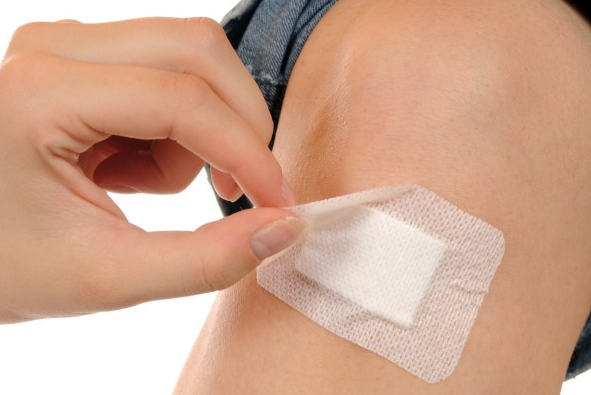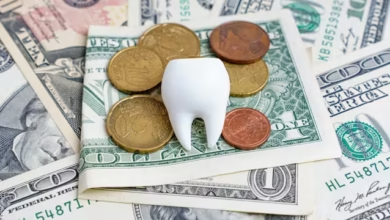Types of Transdermal Delivery Systems

Transdermal drug delivery system are innovative technologies designed to deliver therapeutic substances across the skin into the systemic circulation. Unlike traditional oral or injectable routes, TDDS offers controlled, sustained release of medications, providing several advantages such as avoiding the first-pass metabolism, enhancing patient compliance, and offering localized treatment. The design and type of TDDS are crucial factors that influence the efficiency and effectiveness of dermal delivery.
1. Matrix-Type Transdermal Systems
Matrix-type transdermal systems are one of the most common types of TDDS. In this system, it is dispersed within a polymer matrix that controls the rate of release. The matrix serves as both the carrier and the rate-controlling membrane. This is typically embedded in a solid matrix composed of materials such as polyvinyl alcohol (PVA), ethyl cellulose, or acrylic polymers.
Mechanism:
- Release: It diffuses from the matrix through the skin layers into the systemic circulation. The release rate is controlled by the concentration gradient between the reservoir and the skin.
- Controlled release: The matrix ensures a consistent release of the extended period, which can range from hours to days.
Applications:
- Used for continuous and controlled delivery such as nicotine (nicotine patches), fentanyl (pain management), and estrogen in hormone replacement therapy.
Advantages:
- Simple and cost-effective design.
- No need for a separate rate-controlling membrane.
- Ideal for with moderate to high solubility.
Disadvantages:
- Limited control over the initial burst release.
- Less flexibility in designing the release profile compared to reservoir systems.
2. Reservoir-Type Transdermal Systems
Reservoir-type systems are designed with a central reservoir surrounded by a rate-controlling membrane that governs the release. It is stored in a liquid or semi-solid reservoir, and the membrane controls how much is allowed to pass through.
Mechanism:
- Release: It is released through the rate-controlling membrane, which limits the diffusion and ensures that it is delivered at a consistent, controlled rate.
- Controlled release: These systems provide a more precise and predictable release profile compared to matrix systems.
Applications:
- Used for medications that require a constant, stable dose, such as nicotine patches for smoking cessation, nitroglycerin patches for heart conditions, and fentanyl patches for pain management.
Advantages:
- Precise and reliable control of release.
- Ideal for consistent and controlled delivery over time.
- Can deliver larger doses more effectively.
Disadvantages:
- More complex and expensive to manufacture.
- The potential for leakage or rupture of the reservoir.
FOR MORE INFORMATION CLICK HERE : eid chocolate gifts
3. Monolithic or Single-Layer Systems
Monolithic or single-layer transdermal patches are a simplified design where the it is uniformly mixed with an adhesive polymer layer. This layer adheres to the skin, and the medication is delivered directly through the skin.
Mechanism:
- Medication release: In these patches, the medication is uniformly distributed throughout the adhesive matrix. The medication is released as the adhesive matrix interacts with the skin, and the rate of diffusion depends on the medication concentration in the matrix.
Applications:
- Commonly used in medication that require relatively simple release mechanisms, such as nicotine patches and some hormone replacement therapies.
Advantages:
- Easier and cheaper to manufacture than more complex systems.
- Simpler and more convenient for both manufacturers and consumers.
Disadvantages:
- Limited flexibility in release profiles.
- Can suffer from inconsistent release rates if the adhesive is not well-distributed or if the patch size is inadequate for the medication’s dose.
4. Iontophoretic Transdermal Systems
Iontophoresis is an electrotransport-based method where a small electric current is used to enhance the permeation of charged medication molecules through the skin. The application of a low-level electrical current facilitates the movement of ions or polar medication across the skin’s barrier.
Mechanism:
- Delivery: The electric current helps move charged medication molecules through the skin by repelling like charges and attracting opposite charges. The medication delivery is facilitated by the ionization of the medication and electroosmosis.
- Controlled delivery: The rate of delivery can be controlled by adjusting the electrical current.
Applications:
- Used for medication that have low skin permeability, such as certain analgesics (e.g., lidocaine for localized pain relief), anti-inflammatory medication, and hormones.
Advantages:
- Effective for delivering charged or polar medication that would otherwise not permeate the skin.
- Non-invasive and controlled, offering real-time adjustments to the medication delivery rate.
Disadvantages:
- Requires a power source and specific devices for iontophoresis, which may reduce portability.
- Not suitable for all types of medication, especially those that are non-ionized.
5. Electroporation Transdermal Systems
Similar to iontophoresis, electroporation involves the use of short electrical pulses to temporarily create pores in the skin. These micropores allow larger molecules, such as proteins and peptides, to pass through the stratum corneum.
Mechanism:
- Delivery: The electrical pulses create transient disruptions in the lipid bilayers of the skin, allowing larger molecules to permeate the skin.
- Controlled delivery: The electroporation technique allows for enhanced delivery of larger molecules that would not be absorbed through the skin using conventional methods.
Applications:
- Used in the delivery of larger medication, such as biologics (e.g., insulin, vaccines), as well as macromolecules like peptides and proteins.
Advantages:
- Effective for larger molecules that cannot normally penetrate the skin.
- Potential for targeted delivery with minimal systemic side effects.
Disadvantages:
- Requires specialized equipment to generate electrical pulses.
- May not be suitable for all medications, especially for those with low solubility.
6. Microneedle-Based Transdermal Systems
Microneedles are tiny, sharp needles that painlessly penetrate the skin’s outer layer (stratum corneum) to deliver medications directly into the epidermis or dermis. These needles are typically less than 1 millimeter in length and can be made of materials such as silicon, metals, or polymers.
Mechanism:
- Delivery: Microneedles create micro-channels in the skin, allowing the medications to bypass the stratum corneum and deliver the therapeutic agent directly to the targeted site.
- Controlled release: The delivery is more precise and allows for faster absorption of the medication compared to traditional transdermal patches.
Applications:
- Used in vaccines, insulin delivery, and other biologic therapies, as well as for dermatological treatments like acne and anti-aging treatments.
Advantages:
- Pain-free and minimally invasive.
- Ideal for delivering macromolecules such as proteins and vaccines.
- Can be used for both systemic and localized delivery.
Disadvantages:
- Requires careful design to ensure the microneedles are effective without causing excessive damage or irritation to the skin.
- May require additional technology (e.g., a device to insert the microneedles) for practical use.
7. Vapo-Emission Transdermal Systems
Vapo-emission systems are a relatively newer form of transdermal delivery. These systems use heat or vapor to enhance the penetration through the skin.
Mechanism:
- Delivery: Heat or vaporized particles are applied to the skin, where they permeate through the skin layers into the bloodstream.
Applications:
- Being explored for the delivery of volatile things, such as those used in aromatherapy, nicotine replacement, or analgesics.
Advantages:
- Non-invasive and potentially convenient for certain therapeutic agents.
Disadvantages:
- Limited to certain types.
- Potential issues with uniformity and control over substance release.
Conclusion
Transdermal delivery systems have revolutionized administration by providing non-invasive, controlled, and sustained delivery. Each type of TDDS offers distinct advantages and is suitable for different kinds of therapeutic purposes. Whether using matrix systems, iontophoresis, microneedles, or reservoir systems, TDDS represents a significant step forward in providing effective treatments with fewer side effects, improved patient compliance, and enhanced therapeutic outcomes. As research continues, TDDS will likely evolve to include new technologies and applications, making them an integral part of modern pharmacotherapy.




